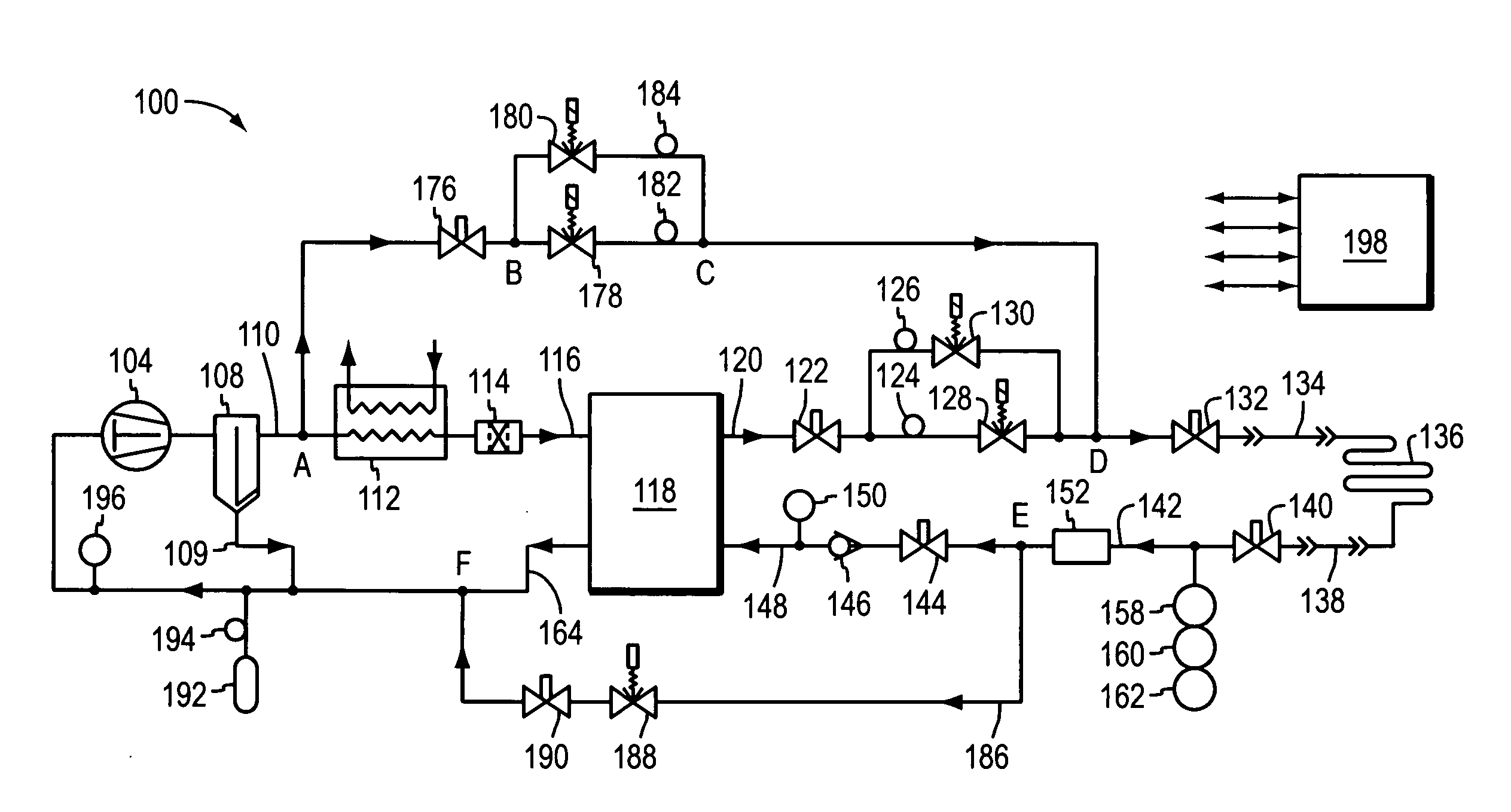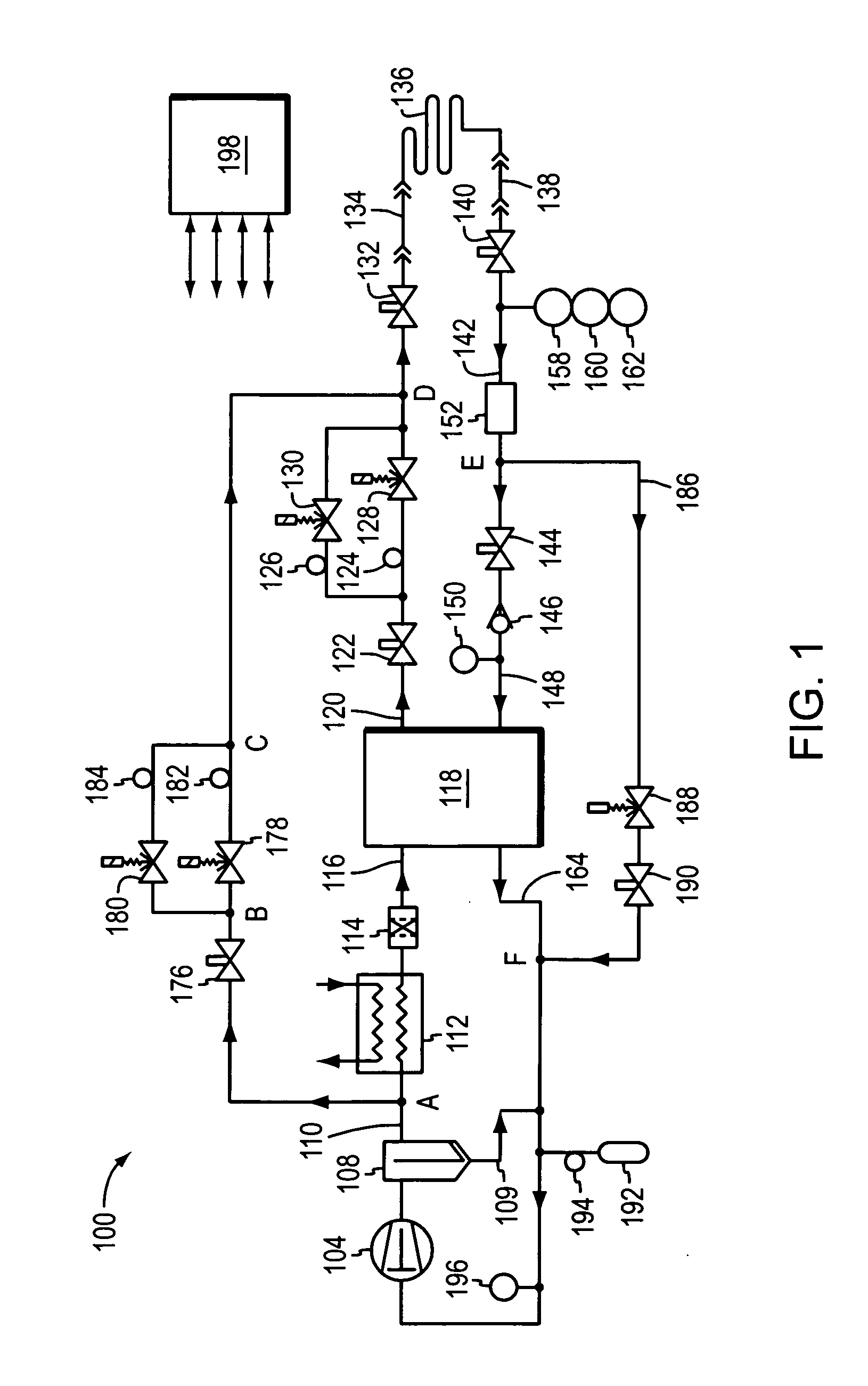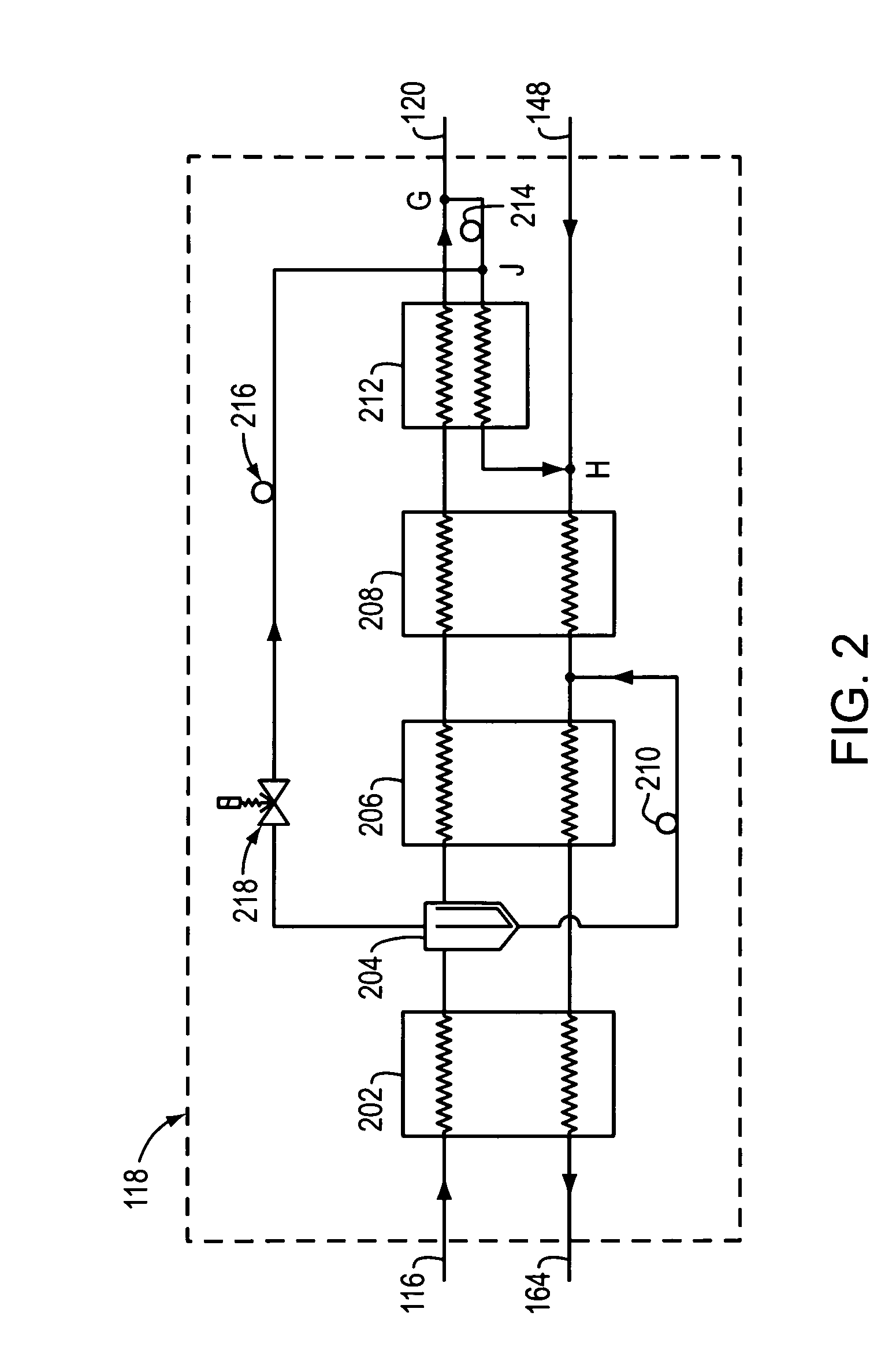Methods of freezeout prevention and temperature control for very low temperature mixed refrigerant systems
- Summary
- Abstract
- Description
- Claims
- Application Information
AI Technical Summary
Benefits of technology
Problems solved by technology
Method used
Image
Examples
first embodiment
[0144] Because the temperature control embodiment of FIG. 5 uses the same bypass circuit through valve 218 and FMD 216 as in FIG. 2, these embodiments are called the “first embodiment,” herein.
[0145]FIG. 3 illustrates a second embodiment of the invention. In this embodiment a different method of controlling temperature and / or preventing freezeout is described. The coldest liquid refrigerant at node G is split to a third branch that feeds valve 318 and FMD 316. The exiting flow from FMD 316 mixes at node H with flows exiting from the subcooler 212 and the return refrigerant stream 148. As in the first embodiment the goal is to eliminate the potential for freezeout, and / or to control temperature for other purposes.
second embodiment
[0146] In the second embodiment, temperature is controlled and / or freezeout is prevented or temperature controlled by keeping a lower flow rate of refrigerant through the low-pressure side of subcooler 212 than through the high-pressure side of subcooler 212. This causes the high-pressure flow exiting subcooler 212 to be warmer. Adjusting the ratio of flow that bypasses directly from node G to H causes varying degrees of warming of the refrigerant exiting the high-pressure side of subcooler 212 and consequently causes a warming of the expanded refrigerant entering the low-pressure side of subcooler 212. The more flow that is bypassed around the subcooler, the more temperature control effects are produced, for example producing warmer cold end temperatures.
[0147] In contrast, prior art systems did not use this method and had equal flows on both sides of the subcooler, when flow to the evaporator was turned off. This method worked well in systems with a basic defrost method when the F...
third embodiment
[0156] In the invention, FIG. 4 depicts another alternate method to provide temperature control and / or to manage refrigerant freezeout. In this case modifications are made to components typically located near the compressor. Typically these can be components that operate from room temperature to no colder than −40° C. This is shown as refrigeration system 200, which is modified from refrigeration system 100 by the addition of control valve 418 and FMD 416. This arrangement provides a means to bypass refrigerant flow from high pressure to low pressure and to bypass the refrigeration process 118.
[0157] This has a number of effects. Two of these effects, considered to be the most important, are a reduction in the flow rate through the refrigeration process and an increase in the low pressure of the refrigeration system. When a sufficient amount of flow is bypassed through these additional components, warming is elected, resulting in temperature control and / or freezeout prevention in th...
PUM
 Login to View More
Login to View More Abstract
Description
Claims
Application Information
 Login to View More
Login to View More - Generate Ideas
- Intellectual Property
- Life Sciences
- Materials
- Tech Scout
- Unparalleled Data Quality
- Higher Quality Content
- 60% Fewer Hallucinations
Browse by: Latest US Patents, China's latest patents, Technical Efficacy Thesaurus, Application Domain, Technology Topic, Popular Technical Reports.
© 2025 PatSnap. All rights reserved.Legal|Privacy policy|Modern Slavery Act Transparency Statement|Sitemap|About US| Contact US: help@patsnap.com



